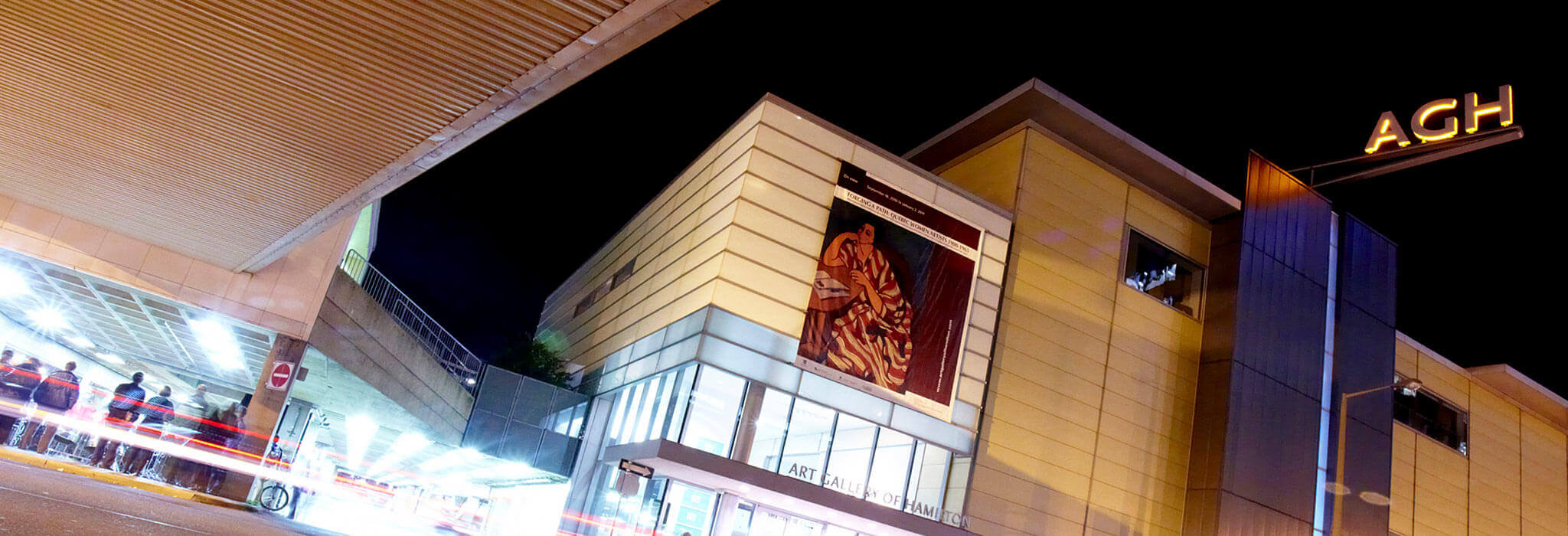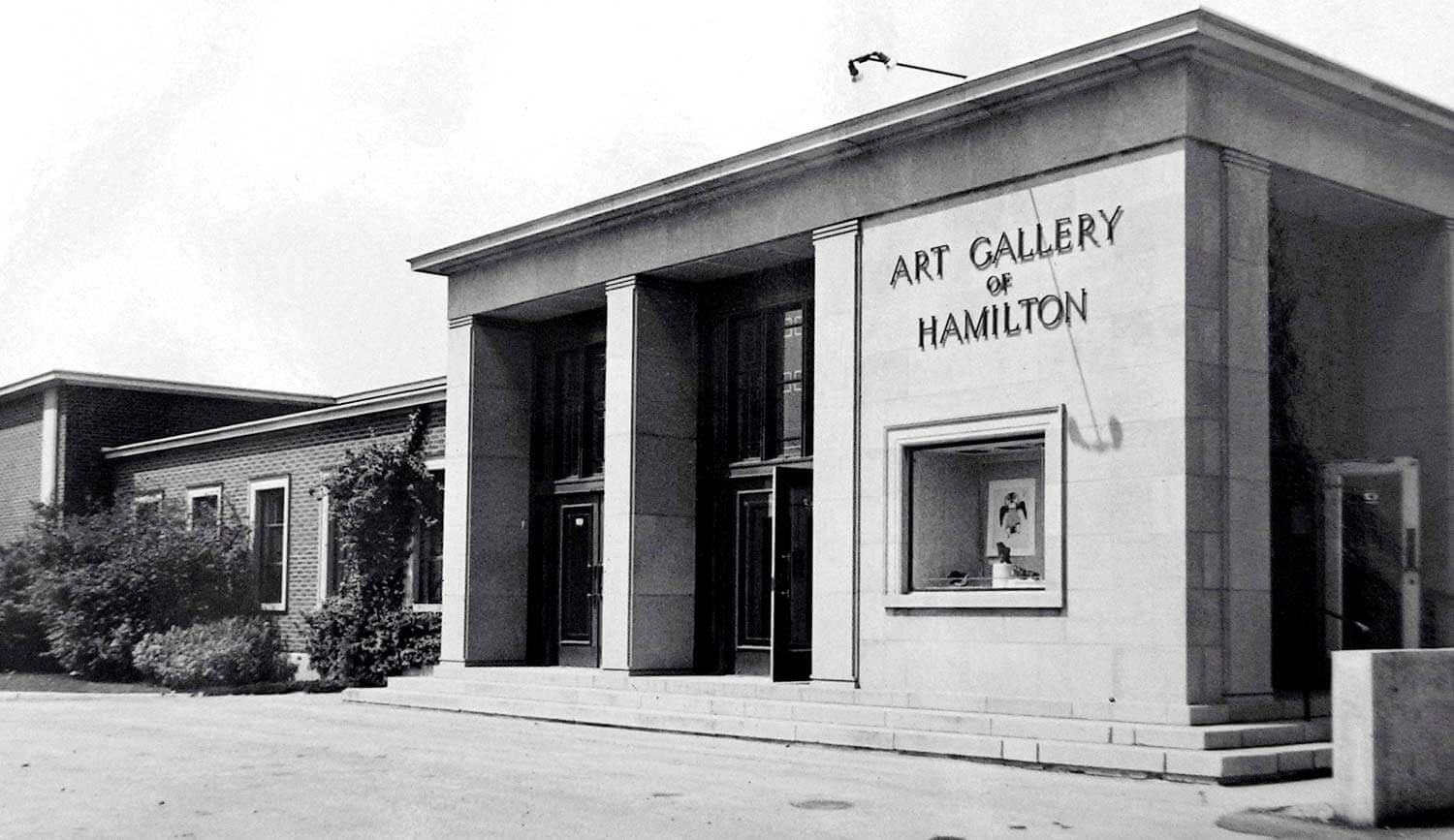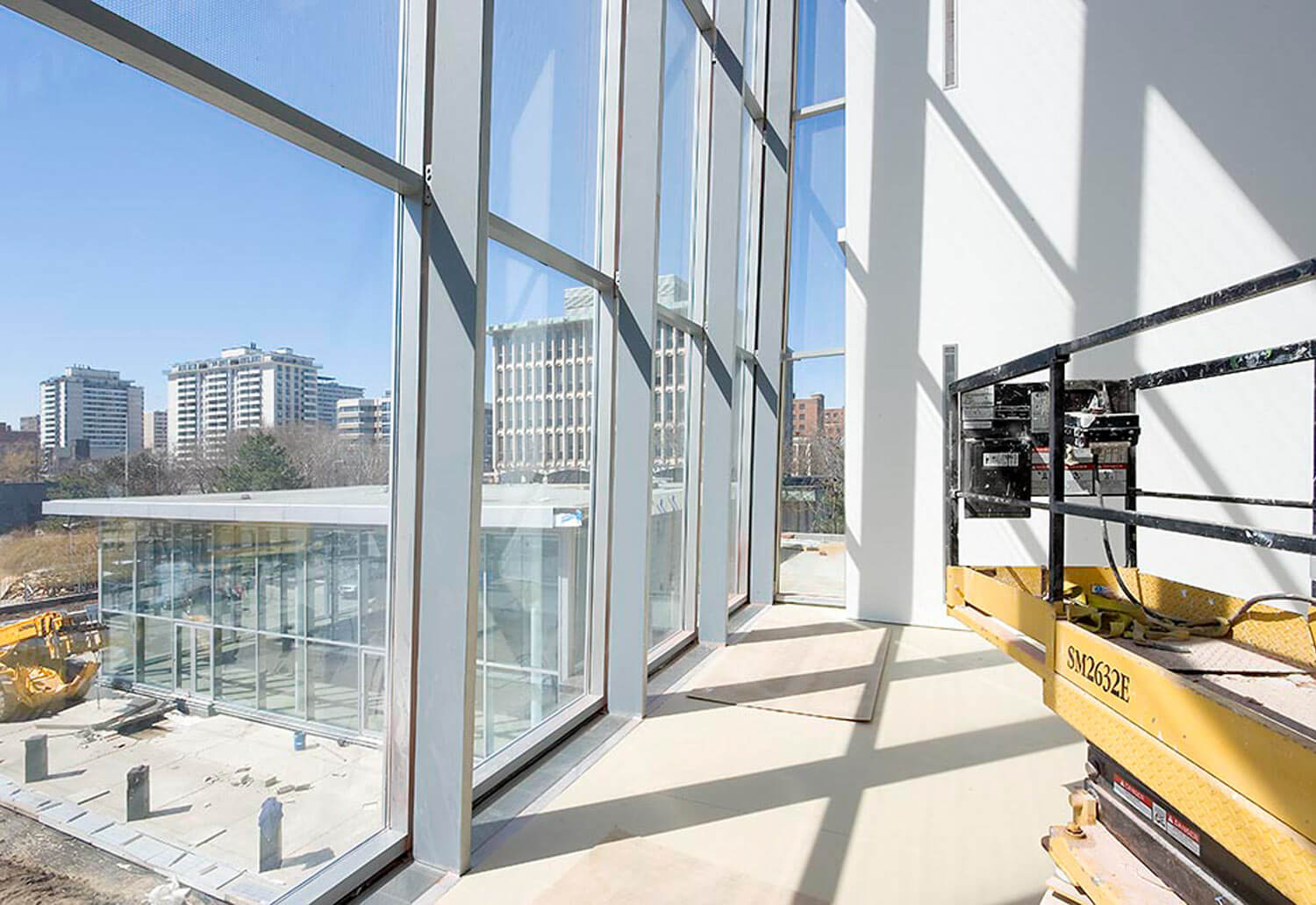History

About the AGH
History
On Sunday, June 28, 1914 the Art Gallery of Hamilton opened its doors with an inaugural exhibition of paintings by Hamilton-born artist William Blair Bruce (1859-1906).
The 33 works presented in the exhibition included a group of 29 paintings known as the “Bruce Collection” donated to the City of Hamilton by his widow, Caroline Benedicks-Bruce and members of his family. The donation was given with one important proviso that “an appropriate venue” be found to exhibit them. And so, the impetus to establish the AGH was formed and the seed of its permanent collection sown.
William Blair Bruce is known as one of Canada’s first Impressionists and one of the first Canadian artists to have a successful international career. As an aspiring artist, he studied art at the Mechanics Institute, and in 1881 he crossed the Atlantic to study in France. In Paris, he attended L’Académie Julian, where he studied under respected painters in the then prevalent academic style. In Barbizon, he also painted out-of-doors–en plein air–emulating the Naturalism of contemporary French painters. His submission to the 1884 Paris salon would, he hoped, garner a prize. However, although critics were favourable, no prize was offered. In 1885, penniless and disillusioned, Blair shipped 200 of his paintings to Canada, hoping to sell them there. Unfortunately, all his work was lost when the ship sank in the Gulf of the St. Lawrence. Stricken by his disastrous setback and worn out by overwork, he returned to recuperate in Hamilton.
In late 1886, Bruce returned to France and settled in Giverny where he produced his earliest Impressionist paintings. During this time, when the Canadian press was calling for “the establishment of a national art imbued with Canadian themes” he painted The Phantom Hunter. From a European perspective, the Canadian subject matter was exotic and appealing, and Bruce’s reputation began to develop.
While working in France, Bruce met and married Caroline Benedicks, a Swedish sculptor. Over the succeeding years, as the couple travelled and worked internationally, Bruce and his work gained international recognition. Increasingly they worked in Sweden, particularly on the island of Gotland, and in 1890, the couple settled there in a house they named Brucebo. In 1906, Bruce died in Sweden at age 47.

William Blair Bruce (Canadian 1859-1906), The Phantom Hunter 1888, oil on canvas, Bruce Memorial, 1914.
On January 31, 1914, the Municipal Gallery of Hamilton was incorporated with an annual budget of $1,000 for its operation, maintenance and collection. The first municipal gallery was housed in the Hamilton Museum in five rooms on the second floor of the disused Hamilton Public Library Building on Main Street, just west of James St. The Gallery continued to be located there for the next 33 years in quarters described as “dusty, dreary, and dead”.
R.A. Robertson, Chairman of the Board of Directors, reported in 1924, “We were not able to buy any pictures this year. We bought one last year, and one the year before. We ought to make the city understand that we are carrying a trust for it. The city does not live by bread alone.” In 1929, the City increased the Gallery’s annual operating grant from $1,000 to $1,240, a level which remained constant until 1947. During the Great Depression in the 1930s and the Second World War, the Gallery continued to struggle. Because of the age and unsafe condition of the old Library building the Gallery was unable to attract neither premier exhibitions nor patrons willing to contribute to the permanent collection. Over the decades the Board sought to move the operation to more suitable facilities, including Gage Park, the Royal Botanical Gardens, and even Gore Park, but the financing for the rebuilding remained elusive.

The Art Gallery of Hamilton, circa 1914, located on the second floor of the old Hamilton Public Library Building on Main Street West. Photo courtesy Hamilton Public Library Local History Archives.
A reversal of fortune began in 1947 when the City Council allocated $8,500 to finance “the salary of a curator and the conservation of the permanent collection”. Thomas Reid MacDonald, the first-time Curator-Director and first paid member of staff, had three immediate objectives: to refurbish the existing facility; to develop a largely Canadian permanent collection; and to undertake exhibitions that would bring Canadian art to Hamilton.
Through MacDonald’s personal and professional connections with major Canadian collectors and artists, he began building what was to become one of the finest collections of Canadian historical art in the country. One of MacDonald’s earliest acquisitions was Alex Colville’s iconic Horse and Train.
In 1952, the AGH hired architects to design an Art Deco style one-storey building with exhibition space totalling 10,000 square feet. Built on Royal Botanical Garden lands close to McMaster University and the Sunken Gardens in West Hamilton, the Art Gallery of Hamilton opened its second location on December 12, 1953, far from its roots downtown.

The Art Gallery of Hamilton, circa 1952, the building located on Forsythe Avenue in Westdale. Photo courtesy Hamilton Public Library Local History Archives.
During the early years of T.R. MacDonald’s tenure, the role of the Women’s Volunteer Committee cannot be underestimated. Appointed by MacDonald, the mission of the auxiliary was to “stimulate interest in the Gallery” and to “help raise money”. The women volunteers immediately undertook a membership drive and fundraising activities that brought $200,000 to help finance the new building in Westdale.
The Women’s Volunteer Committee fundraising efforts also provided money with which MacDonald acquired more than 100 works between 1954 and 1975, such as Forbidden Fruit. In the late 1970s, the Committee was renamed the Volunteer Committee. This Committee’s support and service to the Gallery have continued unbroken. To date they have raised funds for the acquisition of 400+ works for the permanent collection.
So successful was MacDonald in developing the permanent collection that by 1960 the Gallery needed more storage and exhibition space. McMaster University was also in growth mode and so it became most apparent that the AGH needed to find a new home.
In the late 1960s, the City of Hamilton unveiled a plan for a downtown urban renewal scheme called the Civic Square Project. The plans called for a theatre, a convention and trade centre, a library and an art gallery. The City invited the AGH to relocate downtown. In 1969, the architect Trevor Garwood-Jones was commissioned to design a building to house the Gallery and its permanent collection.
In 1973, T.R. MacDonald retired and Glen E. Cumming was appointed as the new Director. The new Art Gallery of Hamilton opened in October 1977. Media coverage during the building’s design and construction increased public interest and support. Under Cumming’s leadership the permanent collection blossomed, particularly in the area of contemporary art. The Women’s Volunteer Committee continued its fundraising activities and the supervision of the Gallery’s operation, and the Gallery developed ambitious educational outreach programs.

The Art Gallery of Hamilton, circa 1977, the building located downtown on King Street West. Photo courtesy Hamilton Public Library Local History Archives.
Despite these advances the Gallery soon faced many increasing difficulties related to the same problems it had endured during its first 50 years, including the fabric of the building and funding. It was even proposed that the Gallery close and the permanent collection be sold.
In 1998, Louise Dompierre joined the AGH as Executive Director, later becoming President and CEO. A new age began. Dompierre bolstered the Gallery’s volunteer and education outreach programs, brought in popular contemporary exhibitions and spearheaded raising funds for a major renovation.
In 1999, Hamilton-born architect Bruce Kuwabara won the design competition to address a number of structural issues and increase exhibition, studio and office space, and public access. The $18 million renovation began in 2003. The renovation, which strengthened the Gallery’s status as a world class art museum, enabled it to attract major travelling exhibitions and ensured the preservation of what had become one of the finest art collections in Canada.

Renovations to the Art Gallery of Hamilton under construction, circa 2004.
Another stroke of fortune came in 2003 when Canadian philanthropists Joey and Toby Tanenbaum made a multimillion dollar gift of more than 200 works of internationally significant 19th-century European art.
In May 2005 the refurbished AGH re-opened with two blockbuster exhibitions: Heaven and Earth Unveiled: European Treasures from the Tanenbaum Collection and Lasting Impressions: Celebrated Works from the Art Gallery of Hamilton.

The Art Gallery of Hamilton, post-renovations in 2005.
In 2010, Joey and Toby Tanenbaum donated their African collection to the AGH, greatly widening the nature, scope and importance of the collection. A permanent collection acquisition fund was established in 2011.
In 2012 the AGH opened the Design Annex in the heart of the James Street North art district. Over the next 5 years the AGH Annex continued to grow as a creative hub and community programming space. In 2017 the AGH Annex was closed to enable the Gallery to concentrate its programming efforts on their main location on King Street West.
In 2014 the AGH celebrated its centennial with a year of landmark exhibitions, including: Kim Adams: One for the Road, Terrors of the Breakfast Table by Tyler Tekatch, Art for a Century: 100 for the 100th, Into the Light: The Paintings of William Blair Bruce (1859–1906), Painting Hamilton, and The World is An Apple: The Still Lifes of Paul Cézanne.
Shelley Falconer was appointed President and CEO in 2014, on the retirement of Louise Dompierre. Under her stewardship the AGH continues to grow, reaching out to engage new audiences in the greater Hamilton region and farther afield. The new strategic plan, the primary goal of which is to support the sustainability of the AGH, establishes four key priorities: renewed focus on the permanent collection and program; community engagement; learning through art; and long term sustainability.
Today the AGH is the oldest and largest museum in southwestern Ontario. Indeed the AGH is unique in Canada as one of the only public art gallery/museums located outside Canada’s major urban cities that maintains a collection of important national and international repute. From the 29 paintings of the William Blair Bruce Collection which opened the AGH in 1914, the permanent collection has grown to more than 10,000 works.
The Gallery continues to present groundbreaking exhibitions and outstanding educational and community programming. The renewed commitment of the AGH to the public reflects the needs of the many, and not the few, as we work to balance the concept of museum as “temple” and site for contemplation with the contemporary “agora” – an open and engaging social nexus, a thought-provoking context for the exchange of ideas through art.
From the Canadian Art Collection

Yan Q.C.I. 1912
Emily Carr (Canadian 1871-1945)
oil on canvas, Gift of Roy G. Cole, 1992